
How does cassiterite trade shape West Asia"s economic prospects?"
Cassiterite, a mineral essential for tin extraction, holds significant value in global trade, especially within West Asia and the Middle East. This region"s mineral trade platforms, including tin ore, have emerged as pivotal hubs for connecting verified exporters and importers, fostering robust B2B marketplace dynamics. Cassiterite"s importance is underscored by its applications in electronics, construction, and industrial manufacturing, with significant demand from international markets driving local economies. Tin ore traders in the Middle East operate within a sophisticated supply chain powered by regional insights and AI-driven tools like Aritral, which facilitate product listings and direct communication between stakeholders. The supply and demand dynamics of cassiterite in West Asia are influenced by resource availability, regional mining capabilities, and global market trends. The mineral contributes to economic diversification, reducing dependence on oil exports by fostering mineral-based industries. Verified exporters and importers play a critical role in ensuring quality control and international compliance, enhancing the credibility of the regional cassiterite trade. Beyond cassiterite, other minerals such as bauxite, chalcopyrite, chromite, hematite, galena, sphalerite, and coal are integral to West Asia"s economy.
For instance, bauxite trade supports aluminum production, while chalcopyrite and sphalerite bolster copper and zinc markets, respectively. Chromite, crucial for steel production, and hematite, a primary iron ore, further strengthen the region"s economic framework. These minerals collectively shape the region’s supply chain dynamics and international trade relations, aided by innovative trade platforms offering advertising and networking solutions. Aritral simplifies the trading process by enabling profile management, AI-powered marketing, and global sales assistance, bridging gaps between suppliers and consumers in the mineral industry. As West Asia continues to develop its mineral trade capabilities, cassiterite remains a cornerstone, driving economic growth and fostering international collaboration.
-
 Najmeddin 3 months ago
Najmeddin 3 months ago Morocco
Citrine brute
Morocco
Citrine brute
For more info contact us on WhatsApp of gmail.Details
-
 Rahmani 3 months ago
Rahmani 3 months ago Oman
meteorite
Oman
meteorite
meteorite with certificate around 3500grDetails
-
 Abdulrahim Alharbi 2 months ago
Abdulrahim Alharbi 2 months ago Saudi Arabia
Meteorite
Saudi Arabia
Meteorite
Spherical meteoriteDetails
-
 Calvaire Gold Mining Limited 4 months ago
Calvaire Gold Mining Limited 4 months ago Kenya
Gold
Kenya
Gold
We deal in mining and exporting minerals like gold mined in Africa to anywhere across the worldDetails
-
 Kamal Go 2 months ago
Kamal Go 2 months ago Morocco
Meteorites
Morocco
Meteorites
Meteorites are stones that fall from the skyDetails
-
 Khaled Rabi 4 months ago
Khaled Rabi 4 months ago Egypt
Quartz
Egypt
Quartz
Pride of Egyptian industry \nEye of Sokhna Industrial Complex \nQuartz resistant to stains and heat \n5 years warranty and quartz powder material\n010...Details
-
 Ahjar Karima Wa Niyazk 2 months ago
Ahjar Karima Wa Niyazk 2 months ago United Arab Emirates
Stones and Meteorites
United Arab Emirates
Stones and Meteorites
Precious and semi-precious stones, rare and common, meteorites, and volcanic rocksDetails
-
 Amr Sror 2 months ago
Amr Sror 2 months ago Egypt
Meteorite
Egypt
Meteorite
A recently fallen meteorite stoneDetails
-
 Frederic Gizenga 5 months ago
Frederic Gizenga 5 months ago Kenya
Gold, Diamond, Used Rails, Copper Cathodes, Tantalite, Cashew Nuts
Kenya
Gold, Diamond, Used Rails, Copper Cathodes, Tantalite, Cashew Nuts
Merchandise Available!!! Product: Gold Nuggets Weight: 23 Karat Purity: 97% Quantity:4500kgs Price: $ 60,000 Per Kg Commission: $ 3000 Per Kg ...Details
-
 Salem Bahdi Alawlaqi 2 months ago
Salem Bahdi Alawlaqi 2 months ago Yemen
Lunar Meteorite for Sale
Yemen
Lunar Meteorite for Sale
Lunar meteorite for sale with the certificate from the testing laboratory. Serious buyers can contact me via WhatsApp or call.Details
-
 Naif N 2 months ago
Naif N 2 months ago Saudi Arabia
Iron Meteorite: The outer crust of the meteorite indicates that it is recently fallen
Saudi Arabia
Iron Meteorite: The outer crust of the meteorite indicates that it is recently fallen
For sale: Iron meteorite, magnetic attraction, weight (338 grams), and the outer crust of the meteorite indicates that it is recently fallen and not o...Details
-
 Ismail Jibril 2 months ago
Ismail Jibril 2 months ago Libya
Minerals and Stones
Libya
Minerals and Stones
Minerals and StonesDetails
-
 Bilal 7 months ago
Bilal 7 months ago Jordan
Precious Stones Ruby Diamond Agate Emerald
Jordan
Precious Stones Ruby Diamond Agate Emerald
We have Yemeni agate stones, ruby, emerald, amber, coral.Details
-
 Ashar Bhatti 7 months ago
Ashar Bhatti 7 months ago Pakistan
Meteorite
Pakistan
Meteorite
Greeting, Sir My Name is Ashraf Bhatti i have 100 Piece of Black Stone and Meteorite i want to sell out these 100 Pieces i Attached you Couple of Pic...Details
-
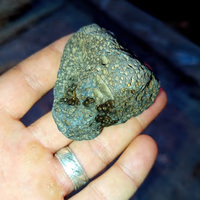 نيزك 2 months ago
نيزك 2 months ago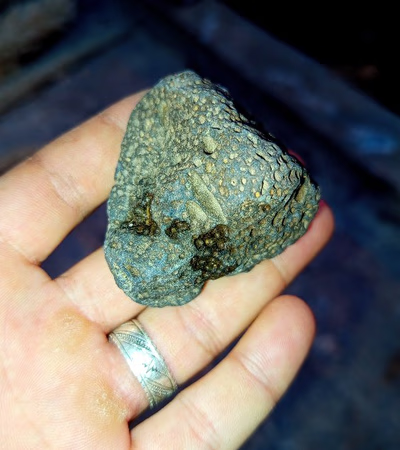 Algeria
نيازك
Algeria
نيازك
نيزكDetails
-
 شرکت کانی الماس البرز 2 months ago
شرکت کانی الماس البرز 2 months ago Iran
Carbonate. Calcium Carbonate. Industrial Lime. Hydrated Lime. Micronized Lime
Iran
Carbonate. Calcium Carbonate. Industrial Lime. Hydrated Lime. Micronized Lime
The largest producer and exporter of Carbonate. Industrial Lime. Hydrated Lime. Micronized Lime with a purity of over 95% Shipping from factory To pla...Details
-
 Ehsan Farshiddoost 2 months ago
Ehsan Farshiddoost 2 months ago Iran
Meteorite with Magnetic Axis
Iran
Meteorite with Magnetic Axis
Precious and ornamental stones that are not in my collection can be exclusively found and documented for your request. Sphalerite in any requested vol...Details
-
 Ilgin Naz Menteş 2 months ago
Ilgin Naz Menteş 2 months ago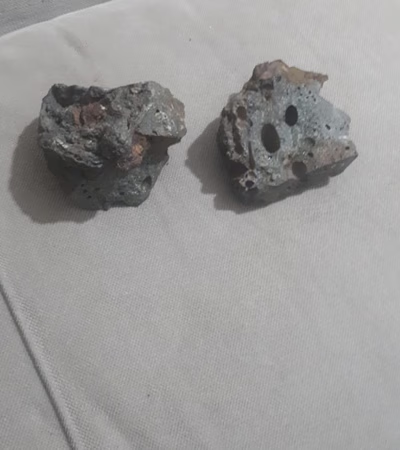 Turkey
Meteorit
Turkey
Meteorit
They are laboratory confirmed meteorites, I have about 44 kg of them, these are just a sampleDetails
-
 دولار 2 months ago
دولار 2 months ago Iraq
Fossil Fish
Iraq
Fossil Fish
A fossil trait found underground at a depth exceeding twenty metersDetails
-
 Meteorites 2 months ago
Meteorites 2 months ago Algeria
Meteorites
Algeria
Meteorites
MeteoritesDetails
-
 Khalid 2 months ago
Khalid 2 months ago Palestine
Natural Stones
Palestine
Natural Stones
Natural stoneDetails
-
 بن قرينة قويدر 2 months ago
بن قرينة قويدر 2 months ago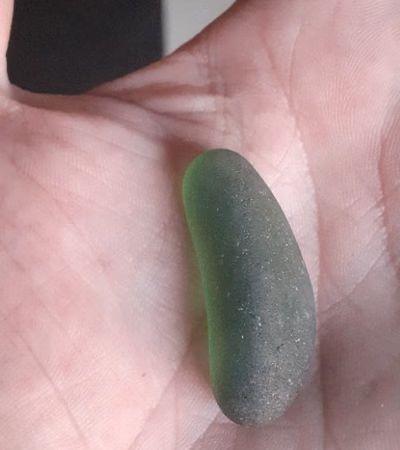 Algeria
Transparent Pure Green Emerald Stone
Algeria
Transparent Pure Green Emerald Stone
Very rare transparent pure green emerald stoneDetails
-
 Natural Meteorite Stone 11 months ago
Natural Meteorite Stone 11 months ago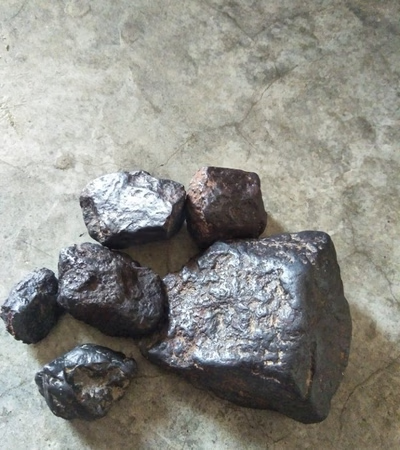 Pakistan
Meteorite stone that I have for selling
Pakistan
Meteorite stone that I have for selling
I have to find good meteorite metal for selling plz contact meDetails
-
 Hajar Alnizak 2 months ago
Hajar Alnizak 2 months ago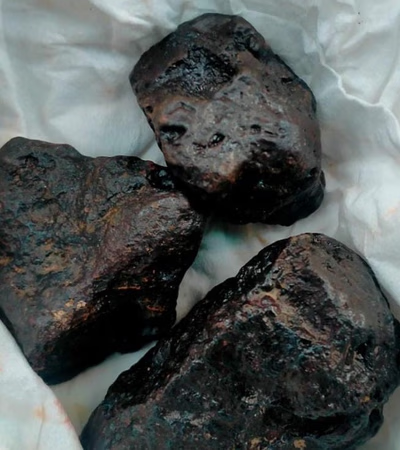 Qatar
Meteorite
Qatar
Meteorite
Omani meteoriteDetails
-
Cassiterite Trade Dynamics in West Asia and Middle East

Cassiterite, a mineral essential for tin extraction, holds significant value in global trade, especially within West Asia and the Middle East. This region"s mineral trade platforms, including tin ore, have emerged as pivotal hubs for connecting verified exporters and importers, fostering robust B2B marketplace dynamics. Cassiterite"s importance is underscored by its applications in electronics, construction, and industrial manufacturing, with significant demand from international markets driving local economies. Tin ore traders in the Middle East operate within a sophisticated supply chain powered by regional insights and AI-driven tools like Aritral, which facilitate product listings and direct communication between stakeholders. The supply and demand dynamics of cassiterite in West Asia are influenced by resource availability, regional mining capabilities, and global market trends. The mineral contributes to economic diversification, reducing dependence on oil exports by fostering mineral-based industries. Verified exporters and importers play a critical role in ensuring quality control and international compliance, enhancing the credibility of the regional cassiterite trade. Beyond cassiterite, other minerals such as bauxite, chalcopyrite, chromite, hematite, galena, sphalerite, and coal are integral to West Asia"s economy.
For instance, bauxite trade supports aluminum production, while chalcopyrite and sphalerite bolster copper and zinc markets, respectively. Chromite, crucial for steel production, and hematite, a primary iron ore, further strengthen the region"s economic framework. These minerals collectively shape the region’s supply chain dynamics and international trade relations, aided by innovative trade platforms offering advertising and networking solutions. Aritral simplifies the trading process by enabling profile management, AI-powered marketing, and global sales assistance, bridging gaps between suppliers and consumers in the mineral industry. As West Asia continues to develop its mineral trade capabilities, cassiterite remains a cornerstone, driving economic growth and fostering international collaboration.
-
Chalcopyrite Trade Dynamics in the Middle East and West Asia

Chalcopyrite, a vital copper sulphide mineral, plays an essential role in the global trade landscape, particularly within the Middle East and West Asia. The region"s rich mineral reserves have positioned it as a critical hub for copper ore trade, connecting suppliers and traders to international markets. Chalcopyrite is widely sought after by industries producing electrical wire, construction materials, and advanced electronics, making it a high-demand commodity for importers and exporters. In West Asia, chalcopyrite mining operations contribute significantly to the copper supply chain, supporting regional economies while feeding global demand for copper products. Verified exporters and importers on B2B marketplaces in Asia are leveraging platforms to streamline their operations, ensuring secure transactions and efficient logistics solutions. Middle Eastern traders, enriched by market insights and trade advertising platforms, are increasingly penetrating international markets by promoting regional product listings of chalcopyrite and other minerals such as chromite, hematite, bauxite, galena, sphalerite, coal, and cassiterite. The Middle Eastern chalcopyrite market benefits from its proximity to major shipping routes and robust business networking opportunities. West Asian suppliers are particularly pivotal in bridging the gap between consumers and sellers of copper metal ore, fostering collaboration across supply chains.
As demand grows, businesses in the region are investing in advanced extraction technologies and trade solutions, enhancing their competitiveness. Aritral, an AI-driven B2B platform, provides a streamlined avenue for chalcopyrite traders in Asia and the Middle East to connect with verified partners and expand their market reach. Its tools for product listing, communication, and AI-powered marketing are tailored to meet the dynamic challenges of the commodity trade sector. "
-
Chromite Trade Dynamics in West Asia and the Middle East

Chromite, a vital mineral for stainless steel production and other industrial applications, holds significant importance in the global commodity trade. West Asia, particularly the Middle East, has emerged as a critical hub for chromite trading, leveraging its strategic location and expansive trade networks. This region"s chromite market is characterized by strong demand from Asian merchants of chrome metal ore, connecting verified exporters and importers through platforms that facilitate seamless transactions. Chromite deposits in West Asia, though smaller compared to global leaders like South Africa and Kazakhstan, are pivotal for regional supply chains. These deposits often serve as intermediate sources for Asian markets, ensuring consistent availability for industrial needs. The Middle East"s trade platform ecosystem actively supports chromite marketing and trading by offering regional product listings, market insights, and business networking opportunities. Verified exporters and importers utilize these platforms to streamline supply chain operations, ensuring reliability and trust in transactions. Platforms advertising trade opportunities for chromite ore often integrate AI-driven tools to enhance visibility and efficiency.
In addition to chromite, West Asia excels in trading minerals like hematite, bauxite, galena, sphalerite, coal, cassiterite, and chalcopyrite. Iron ore suppliers in Asia capitalize on the hematite trading market, driven by demand for steelmaking. Similarly, bauxite trade flourishes due to its importance in aluminum production, while galena and sphalerite cater to lead and zinc industries, respectively. Coal remains indispensable for energy, and cassiterite supports tin production. Chalcopyrite, a primary copper ore, shapes the region"s economic landscape through its critical role in global mineral exports. Platforms like Aritral simplify international trade in these commodities by offering product listings, AI-powered marketing, and profile management. As West Asia continues to grow its mineral trade portfolio, its role in shaping global supply chains becomes increasingly prominent. "
-
Coal Trade Dynamics in West Asia and Middle East

Coal remains a cornerstone of global energy markets, playing a pivotal role in industrial development. In West Asia and the Middle East, coal trade dynamics are influenced by a growing demand for reliable energy sources and industrial raw materials. West Asian coal traders and suppliers engage actively in regional export-import activities, leveraging B2B marketplaces that emphasize verified exporters and importers to ensure trust and quality in transactions. This region"s coal trade is characterized by strong supply chain solutions and market insights, allowing businesses to navigate fluctuating demand and regulatory complexities efficiently. Coal producers and consumers across Asia have developed robust networks to meet energy and industrial needs, with high demand markets in East Asia driving exports. Target markets for coal exports from West Asia include countries like India and China, which consume substantial quantities for electricity generation and steel production. These trade flows are facilitated by platforms offering detailed regional product listings, enabling buyers to locate verified suppliers efficiently. The coal trade also intersects with other mineral trading activities in West Asia, including bauxite, chromite, chalcopyrite, hematite, galena, cassiterite, and sphalerite.
Each mineral contributes uniquely to the regional economy, with bauxite supporting aluminum production, chromite essential in steelmaking, and sphalerite critical for zinc supply chains. B2B marketplaces in this region, such as Aritral, simplify these transactions through AI-powered marketing and profile management tools, ensuring businesses connect seamlessly. Market trends indicate that coal consumption in West Asia is expanding due to industrial growth, while exports remain robust to meet global energy demand. Verified exporters and importers play a crucial role in maintaining the integrity of these trade relationships, underscoring the importance of advanced trade advertising platforms for business networking. Coal’s significance in energy security and industrial development ensures sustained economic impact in West Asia and the Middle East. "
-
Galena and Mineral Trade in the Middle East: Trends and Insights

Galena, a natural lead sulfide mineral, is a cornerstone resource in the Middle East and West Asia"s mineral trade. Its prominence in the region stems from abundant reserves and strategic trade platforms that facilitate the import, export, and sale of this key commodity. Verified exporters and importers play a pivotal role in ensuring streamlined supply chain solutions, meeting the demand for lead ore across multiple industries, including batteries, construction, and electronics. Countries like Turkey, Iran, and Saudi Arabia are critical players in the galena trade, leveraging their geographic positioning within crucial trade corridors. The galena market in the Middle East is heavily influenced by global demand, with the Asian galena ore market acting as a significant export destination. West Asia"s reserves, including some of the largest galena mines globally, make it a hub for supply. This mineral trade not only supports local economies but also strengthens the region"s position in global commodity markets. While advancements in mining technology enhance extraction efficiency, platforms like Aritral ensure that trade is transparent, connecting suppliers with verified buyers.
Parallel to the galena market, other minerals such as bauxite, sphalerite, coal, cassiterite, chalcopyrite, chromite, and hematite drive economic activity across the region. For instance, the bauxite trade significantly impacts the aluminum industry, while chromite supports global steel production. Similarly, sphalerite, the primary ore of zinc, and cassiterite, vital for tin production, see robust trade dynamics. These commodities are central to the Middle East"s mineral economy, supported by innovative B2B platforms offering market insights, regional product listings, and trade advertising solutions. Aritral, an AI-driven B2B platform, simplifies the complexities of mineral trade by offering services like product listing, direct communication, and AI-powered marketing, fostering seamless transactions across borders.
-
Hematite Trade and Mineral Economy in West Asia

Hematite, a primary source of iron ore, plays a vital role in the mineral trade ecosystem across West Asia and the Middle East. This region has become a dynamic hub for import and export of raw materials like hematite, bauxite, galena, sphalerite, coal, cassiterite, chalcopyrite, and chromite. The hematite trade market in the Middle East is particularly robust, driven by high demand from industries such as steel production and construction. Verified exporters and importers in West Asia leverage platforms like Aritral to streamline their supply chain solutions and access regional product listings effectively. The supply and demand for hematite in West Asia have been fueled by large-scale mining operations and the strategic location of the Middle East, which acts as a trade bridge between Asia, Europe, and Africa. Iron ore suppliers in Asia capitalize on this regional connectivity to export hematite minerals to markets worldwide. Business networking efforts in West Asia further enhance partnerships between hematite traders and buyers, ensuring seamless trade transactions. Other minerals such as bauxite, galena, and sphalerite also contribute significantly to the commodity trade.
Bauxite, a critical input for aluminum production, has witnessed growing trade volumes in West Asia, driven by increasing industrial activities. Similarly, galena and sphalerite, essential for lead and zinc extraction, are key contributors to the mineral trade economy. Coal, cassiterite, chalcopyrite, and chromite round out the list, with each playing a pivotal role in shaping the economic landscape of the region. Platforms like Aritral support these trading dynamics by offering AI-powered marketing and international sales assistance. By simplifying regional trade processes, they facilitate growth opportunities for mineral businessmen and traders in the Middle East and West Asia.
-
Sphalerite Trade Insights: Middle East and West Asia Zinc Ore Market

Sphalerite, a critical zinc ore mineral, plays a vital role in global trade, particularly in West Asia and the Middle East. As the primary source of zinc, sphalerite fuels industries ranging from construction to electronics. The mineral"s trade dynamics are tightly linked to the region"s economic development, with verified exporters and importers facilitating seamless transactions through modern B2B marketplaces and supply chain solutions. In the Middle East, the sphalerite mineral trade thrives on robust regional product listings and market insights, empowering traders to meet industrial demands efficiently. The demand for zinc ore in Asia is driven by infrastructure development and technological advancements, making West Asia a pivotal hub for sphalerite producers and consumers. Verified exporters ensure quality and compliance, while trade advertising platforms foster business networking opportunities. This enables suppliers to navigate complex supply chain requirements and reach broader markets. The largest sphalerite mines globally often contribute to this regional supply chain, bolstered by cutting-edge trade platforms.
Economic impacts are evident as sphalerite trade strengthens industries, generates employment, and boosts regional GDP. West Asia"s proximity to key global markets further positions it as a strategic node in the commodity trade. Insights into market trends reveal steady growth in zinc ore demand, offering lucrative opportunities for both established and emerging traders. Aritral, an AI-driven B2B platform, simplifies international trade by providing tools for product listings, AI-powered marketing, and direct communication. By connecting verified exporters and importers, platforms like Aritral optimize the sphalerite trade and other mineral markets, enhancing efficiency and growth across West Asia and the Middle East. "
-
Bauxite and Mineral Trade in West Asia and Middle East

Bauxite, the primary source of aluminum, plays a critical role in global trade, particularly in the Middle East and West Asia. As industries in this region grow, demand for bauxite ore has surged, creating opportunities for both regional and international suppliers. West Asia"s bauxite trade market has become increasingly dynamic, with verified exporters from countries like India and Indonesia supplying aluminum ore to meet industrial needs. The Middle Eastern bauxite ore market is expanding due to its strategic location as a hub for global import and export activities, supported by robust supply chain solutions and advanced trade platforms. The economic impact extends beyond bauxite. Minerals like galena (lead ore), sphalerite (zinc ore), coal, cassiterite (tin ore), chalcopyrite (copper ore), chromite, and hematite are shaping the trade dynamics in the region. Verified exporters and importers of galena, for instance, contribute significantly to the lead industry, while sphalerite supports zinc production across Asia. Similarly, coal trade remains essential for energy needs, with West Asian suppliers playing a pivotal role in regional markets.
Cassiterite, chalcopyrite, chromite, and hematite also drive mineral trade, influencing production chains for tin, copper, ferroalloys, and steel, respectively. The bauxite trade is particularly impactful due to its downstream applications in aluminum manufacturing, essential for construction, transportation, and packaging industries. As demand rises, businesses leverage B2B marketplaces, such as Aritral, to streamline trade operations. These platforms offer verified supplier networks, market insights, and AI-driven marketing tools to enhance regional and international trade. By fostering transparency and efficiency, such platforms are instrumental in reshaping the mineral economy of the Middle East and West Asia. The integration of technology and trade expertise ensures that bauxite and other mineral markets continue to thrive in this economically vibrant region. "
-
The largest cassiterite mines in the world

Cassiterite, a tin-bearing mineral, is predominantly produced in China, Australia, and Brazil. China leads global production while also importing cassiterite for various industries including steelmaking and electronics. Significant mining regions include Yunnan and Jiangxi in China, Western Australia, and Roraima in Brazil. Other notable producers are Russia and Bolivia, with key mining areas in Khabarovsk and Potosi respectively. The extraction process involves identifying geological indicators such as specific rock types and using geophysical methods to locate deposits. Cassiterite is typically sold as a concentrate rather than raw ore, undergoing processing that includes grinding and chemical treatments to separate valuable minerals. This processed material is essential for industries like glassmaking and battery production. The demand for cassiterite is influenced by domestic consumption capabilities and international market needs, with major exporting countries focusing on meeting the requirements of larger industrial sectors.
-
Supply and demand situation of cassiterite in West Asia

Cassiterite supply and demand in West Asia is shaped by key players like Iran and Syria as suppliers, while Saudi Arabia, Turkey, and Iraq are major consumers. The region"s cassiterite is primarily used in the form of tin metal due to its favorable properties for various industries, including automotive and electronics. Pricing is influenced by factors such as concentration levels, global market demand, extraction costs, and regional economic conditions. High-concentration cassiterite tends to be cheaper due to lower volume requirements for tin extraction. Countries like Iran have advanced refining technologies and significant resources, enabling them to meet local industrial needs while also exporting tin. Syria also contributes with rich cassiterite mines supporting its metalworking and electronic sectors. Meanwhile, Saudi Arabia and Turkey are notable consumers with diverse industrial applications for cassiterite. Iraq similarly utilizes this mineral across various sectors.
The Middle East"s ability to refine cassiterite into tin allows for both domestic use and export opportunities. Overall, the interplay of supply dynamics, technological capabilities, and market demands shapes the cassiterite landscape in West Asia.
-
What is cassiterite and how is tin metal extracted from it?

Cassiterite, primarily composed of tin oxide, forms through various geological processes including magmatic activity and hydrothermal processes. The formation involves cooling magmas rich in tin and the deposition of minerals from hot water. Geological conditions such as sedimentation, temperature changes, and tectonic activity play crucial roles in cassiterite"s development. Extracting tin from cassiterite typically employs flotation and electrostatic separation methods. The ore is crushed to facilitate processing, followed by chemical refining to achieve desired purity levels. Tin"s applications are extensive; it is vital in construction materials, alloys like bronze, and battery production. Its resistance to corrosion makes it essential for automotive parts and electronic devices. The extraction process is complex and influenced by environmental and economic factors.
-
The value of cassiterite in world trade

Cassiterite is a crucial mineral in global trade, primarily serving as the main source of tin for various industries, including automotive, electronics, and glass manufacturing. The increasing demand for tin batteries and electronic components has significantly boosted the need for cassiterite. Major consumers include China, the United States, Japan, South Korea, and several European countries. The price of cassiterite is influenced by market dynamics; a decrease in supply or an increase in demand leads to higher prices, while the opposite results in lower prices. Countries rich in cassiterite deposits may impose export restrictions to protect domestic resources and industries, impacting global supply and pricing. As a vital resource in world trade, cassiterite"s value is shaped by these factors. "
















































